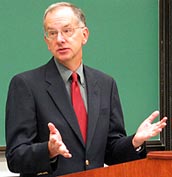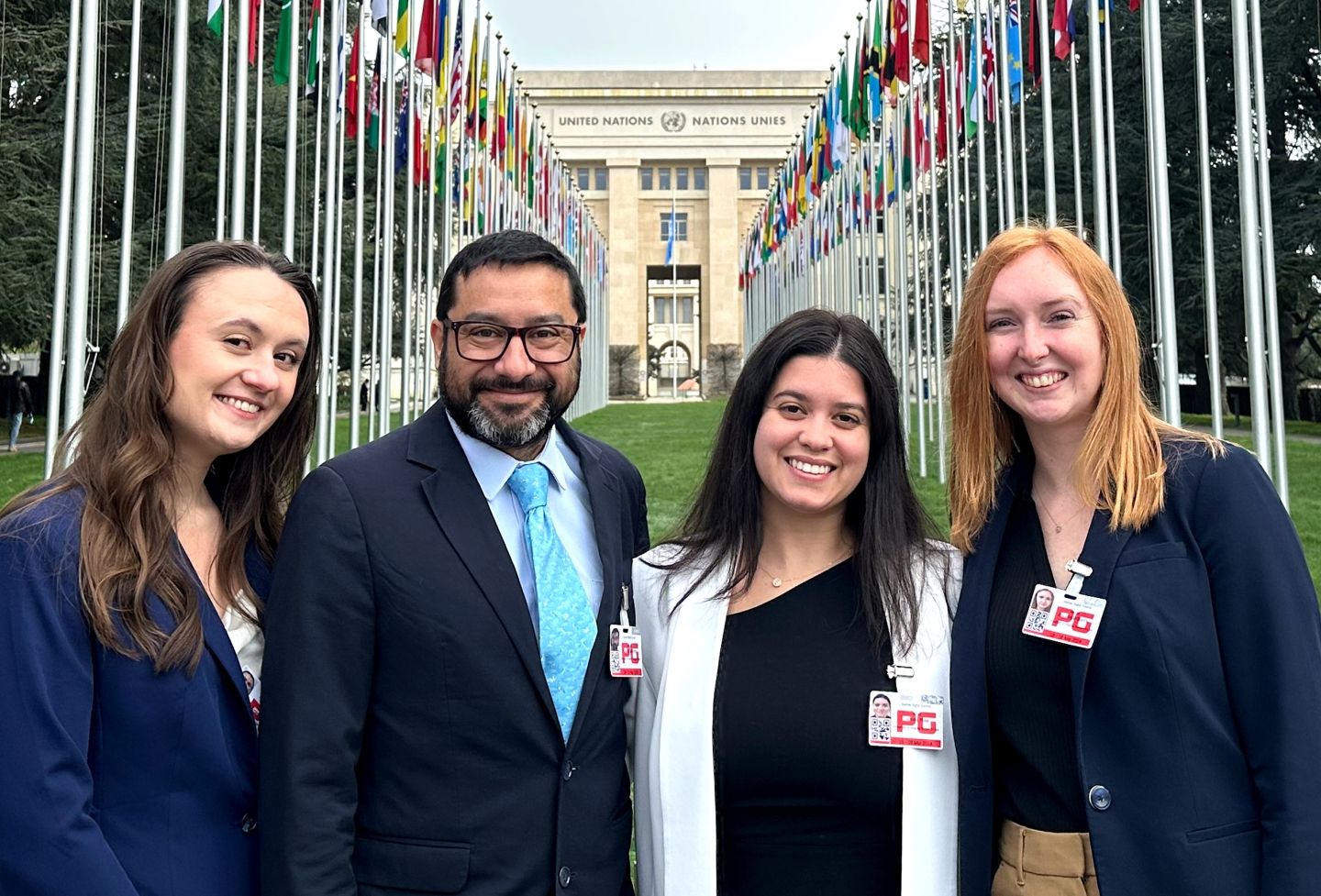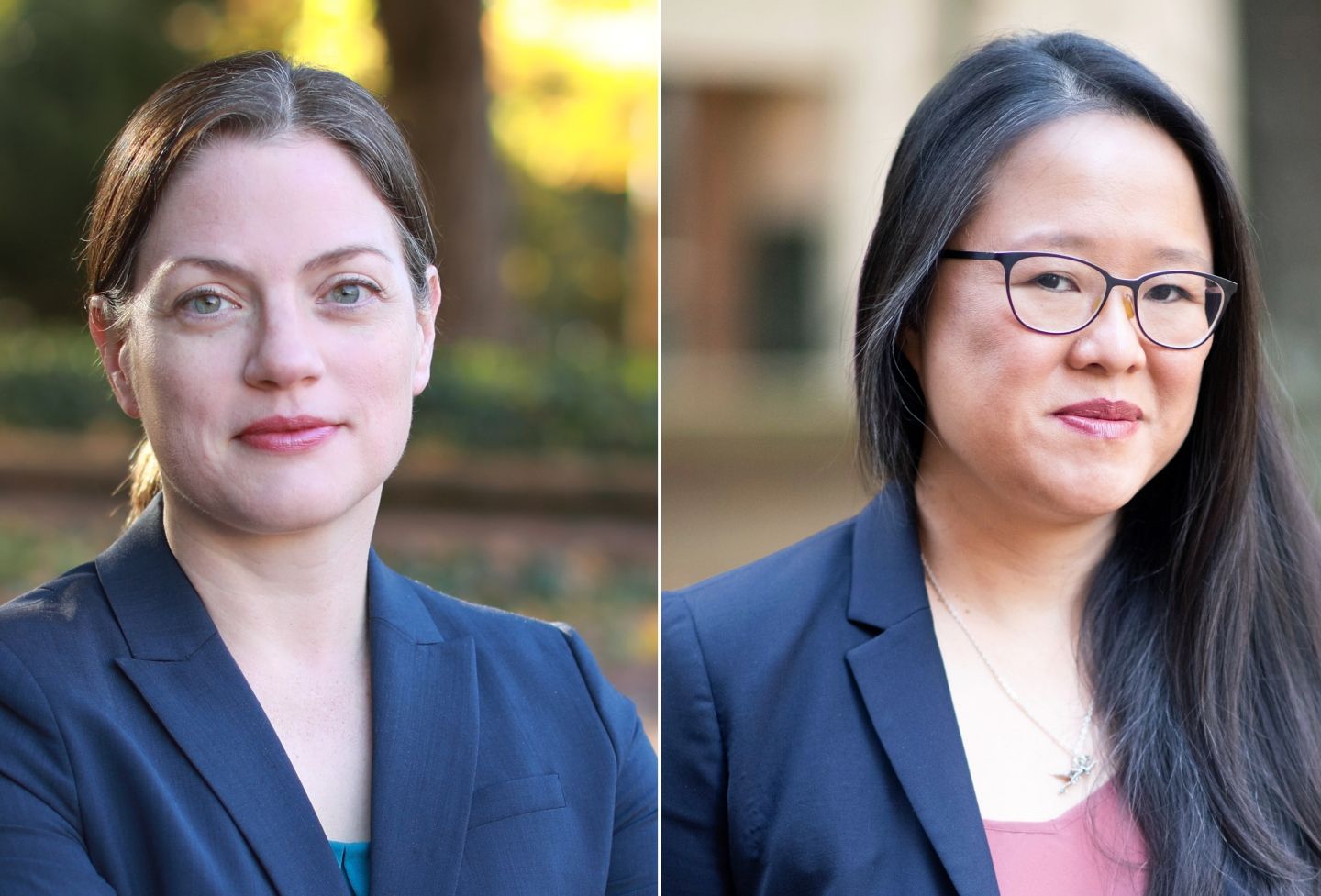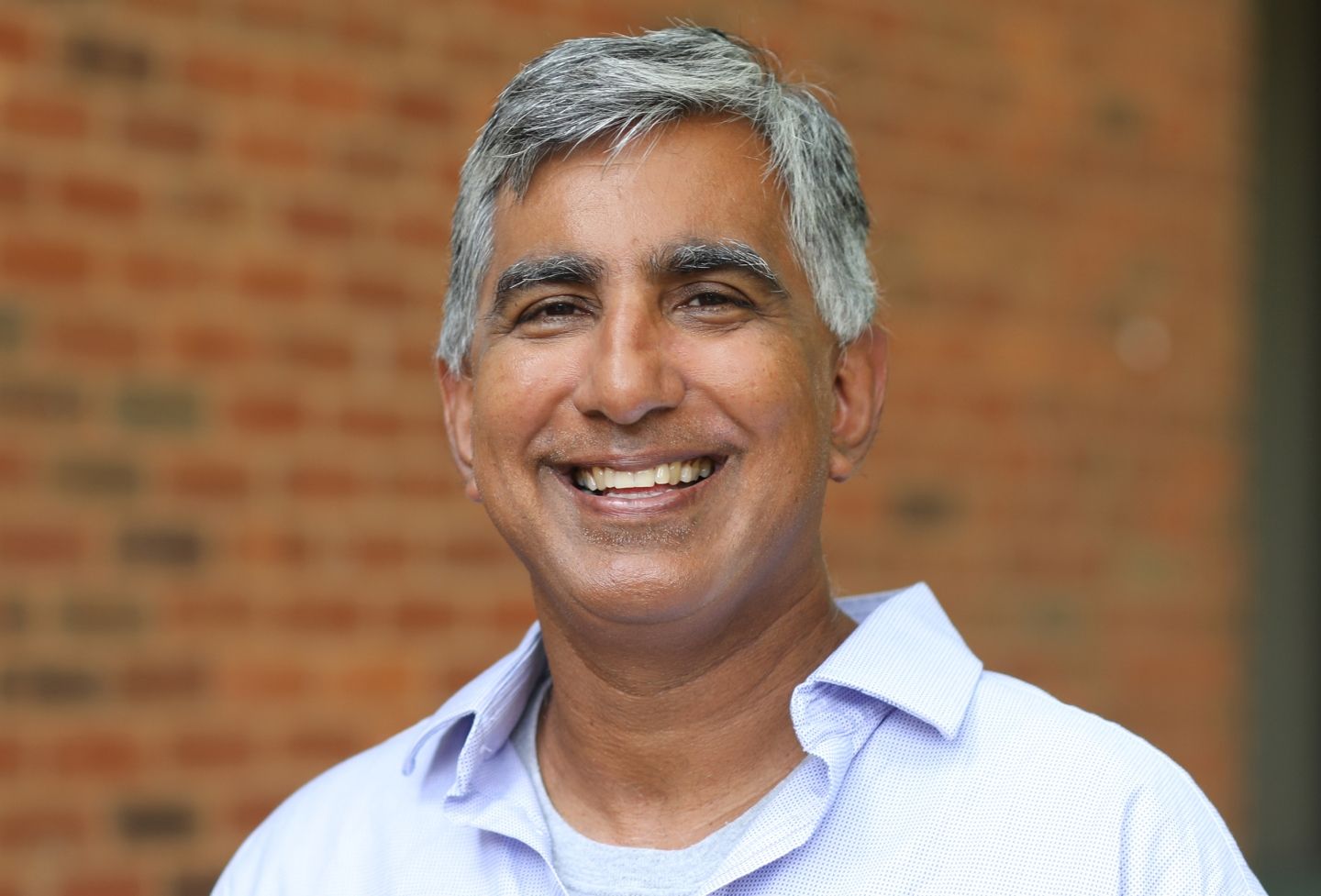More Refugees Can Be Settled in the United States, Martin Says

The number of refugees resettled in the United States has fallen to 29,000 a year since 9/11, less than half the 76,000 routinely settled annually in the five years before the attacks, law professor David Martin told a lunch crowd Nov. 17. To relieve the plight of more refugees the government should systematically identify the most eligible groups, he said. Martin, a former General Counsel for the Immigration and Naturalization Service during the Clinton administration, is preparing a report for the Department of State's Bureau of Population, Refugee, and Migration about how to reverse the recent decline in resettlements. He spoke on "The New World of Refugee Resettlement" at the invitation of the American Constitution Society and the J. B. Moore Society of International Law.
Refugees and resettlement refer to displaced people living in refugee camps overseas who go through screening evaluations to see if they can be settled in the United States. According to the U.N. High Commission on Refugees there are roughly 12 million refugees in the world today. In the last 25 years America has taken in about 2 million, Martin said. The greatest number ever resettled here was about 200,000 during the height of the Vietnamese "boat people" exodus, he said. Canada and Australia are also common resettlement destinations. Resettlement is widely approved of by the public because many Americans have had positive experiences with refugees, Martin said.
The falling numbers have sparked controversy, Martin said. Law requires the president to set annual resettlement targets so that U.S. policy has sufficient flexibility. Martin said the Bush administration "is really committed to getting the numbers back up."
Martin said the decline is partly due to stricter security policies after 9/11 and partly the result of longer-term trends that were not previously understood.
"It's not that there's a static pool of refugees," Martin explained. "It's hard to leave [your home country]. Most refugees have a choice about where to go. If the prospects in a camp are not better, then many people will try to stick it out at home. But adding the prospect of resettlement changes the equation."
The State Department spends about $4,000 per person on resettlement and if fewer are brought over those funds can be spent directly in the camps where their impact is much more broadly beneficial, he said. Some countries worry that if they succeed too well it resettling refugees in the United States that they will create a "magnet effect" and encourage even more refugees to enter the camps.
"I conclude that, yes, we should be worried" about the falling numbers, Martin said. "We need to think about this as a precious human resource that we need to use. [The State Department] needs a system that looks over the range of possible groups, rather than dealing with them piecemeal as they come up.
Identifying especially vulnerable groups is the real challenge, Martin said. "We'll need 10 to 12 new groups every year in order to get back to 70,000. Though it's not a ceiling, the [president's annual limit] needs to be treated operationally as a goal." Martin said that Somali Bantus, Liberians now living in the Ivory Coast, and a Turkish minority group living in Russia are likely candidates for resettlement.
He praised the screening efforts made by resettlement agencies as "very impressive," especially their documentation of family ties, an area open to fraudulent claims. He said the Department of Homeland Security's processing limit of 35 refugee passengers per flight is a "choke point" that needs to be technologically streamlined because getting back to 70,000 would mean 2,000 flights per year. Refugees are fingerprinted and photographed on arrival in the United States, but he said DHS is right to be concerned. "If I were a terrorist group I would look at refugees as a way to infiltrate because the only records you have are what the refugees and their families say about themselves."
Founded in 1819, the University of Virginia School of Law is the second-oldest continuously operating law school in the nation. Consistently ranked among the top law schools, Virginia is a world-renowned training ground for distinguished lawyers and public servants, instilling in them a commitment to leadership, integrity and community service.


